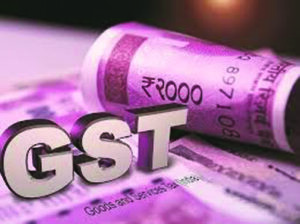- There seems to be a clear thinking about setting up tribunals with regard to GST issues so that the normal litigation route remains less burdened.
- The movement towards bringing petrol, diesel and ATF into the GST net remains quite a distance away.
NE BUSINESS BUREAU
NEW DELHI, JULY 1
With completion of five years of introduction of the Goods and Services Tax (GST), ASSOCHAM on Thursday said the GST is one of the most transformative taxation reforms in India which has made life easier for tax-payers, removed tax-on-tax layers, helped the consumers and is steadily moving on a path of tax buoyancy as well.

”Subsuming a slew of Central and state taxes and cesses, the GST has largely brought in the concept of single uniform tax throughout India, reaching a stable regime after traversing a five-year journey of learning and adapting to the unfolding requirements,” ASSOCHAM Secretary-General Deepak Sood said.
Sood added, “GST has proved to be a seminal reform that has resulted in a single and seamless market in different states of India for a vast majority of goods and services. In an economic legislation of such transformation, five years is not a long time and it is still work-in-progress, but GST reflects a true cooperative federalism amongst states with a wide diversity in economic and social conditions”.
The ASSOCHAM leadership has been working closely with the Centre and the states right from the initial stages of the GST roll-out and continues to engage with the tax administrative authorities and the Finance Ministry for further refinement in the regime.
”Bringing states on board, the Prime Minister Shri Narendra Modi showed a rare conviction to launch the GST on July 1, 2017 transforming the way India does business. One of the most transformative aspects of this taxation is formalisation of the entire value chain,” Sood said.
He said such a feature was woven into the GST system itself through an ‘Input Tax Credit ‘ that necessarily brings together all formal and informal segments into the value chain, well-captured by a technology that is now leading to huge compliance gains.
”GST buoyancy is taking place around Rs 1.40 lakh crore a month, both on account of a sharp economic revival after Covid pandemic and much better compliance , being enabled by technology”.
Going forward, the GST regime as was evident by the outcome of the last GST Council meeting, would see further refinement. There seems to be a clear thinking about setting up tribunals with regard to GST issues so that the normal litigation route remains less burdened. Besides, the rates also seem to be moving towards a three-rate structure.
However, the movement towards bringing petrol, diesel and ATF into the GST net remains quite a distance away.
Both the Centre and states need to be complimented on a successful journey of five years for GST, ASSOCHAM said.












